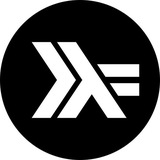XMonad
Динамически мозаичный оконный менеджер X11, написанный и настроенный на Haskell
▫️Очень стабильный, быстрый, маленький и простой.
▫️Автоматическое размещение окон и управление ими
▫️Первоклассная поддержка клавиатуры: мышь не нужна
▫️Полная поддержка мозаичного размещения окон на многоэкранных дисплеях.
▫️Полная поддержка плавающих окон, вкладок и декорированных окон.
▫️Полная поддержка утилит GNOME и KDE.
▫️Поддержка XRandR для поворота, добавления или удаления мониторов
▫️Алгоритмы компоновки для каждого рабочего пространства
▫️Пользовательские строки состояния для каждого экрана
▫️Поддержка композитинга
▫️Мощная, стабильная настройка и реконфигурация на лету
GitHub: https://github.com/xmonad/xmonad
Динамически мозаичный оконный менеджер X11, написанный и настроенный на Haskell
▫️Очень стабильный, быстрый, маленький и простой.
▫️Автоматическое размещение окон и управление ими
▫️Первоклассная поддержка клавиатуры: мышь не нужна
▫️Полная поддержка мозаичного размещения окон на многоэкранных дисплеях.
▫️Полная поддержка плавающих окон, вкладок и декорированных окон.
▫️Полная поддержка утилит GNOME и KDE.
▫️Поддержка XRandR для поворота, добавления или удаления мониторов
▫️Алгоритмы компоновки для каждого рабочего пространства
▫️Пользовательские строки состояния для каждого экрана
▫️Поддержка композитинга
▫️Мощная, стабильная настройка и реконфигурация на лету
GitHub: https://github.com/xmonad/xmonad
tg-me.com/haskell_tg/10
Create:
Last Update:
Last Update:
XMonad
Динамически мозаичный оконный менеджер X11, написанный и настроенный на Haskell
▫️Очень стабильный, быстрый, маленький и простой.
▫️Автоматическое размещение окон и управление ими
▫️Первоклассная поддержка клавиатуры: мышь не нужна
▫️Полная поддержка мозаичного размещения окон на многоэкранных дисплеях.
▫️Полная поддержка плавающих окон, вкладок и декорированных окон.
▫️Полная поддержка утилит GNOME и KDE.
▫️Поддержка XRandR для поворота, добавления или удаления мониторов
▫️Алгоритмы компоновки для каждого рабочего пространства
▫️Пользовательские строки состояния для каждого экрана
▫️Поддержка композитинга
▫️Мощная, стабильная настройка и реконфигурация на лету
GitHub: https://github.com/xmonad/xmonad
Динамически мозаичный оконный менеджер X11, написанный и настроенный на Haskell
▫️Очень стабильный, быстрый, маленький и простой.
▫️Автоматическое размещение окон и управление ими
▫️Первоклассная поддержка клавиатуры: мышь не нужна
▫️Полная поддержка мозаичного размещения окон на многоэкранных дисплеях.
▫️Полная поддержка плавающих окон, вкладок и декорированных окон.
▫️Полная поддержка утилит GNOME и KDE.
▫️Поддержка XRandR для поворота, добавления или удаления мониторов
▫️Алгоритмы компоновки для каждого рабочего пространства
▫️Пользовательские строки состояния для каждого экрана
▫️Поддержка композитинга
▫️Мощная, стабильная настройка и реконфигурация на лету
GitHub: https://github.com/xmonad/xmonad
BY Haskell
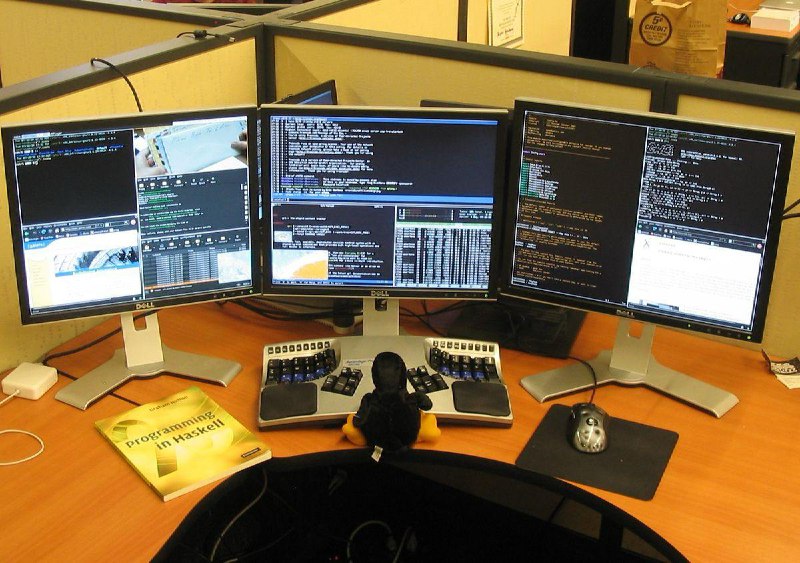
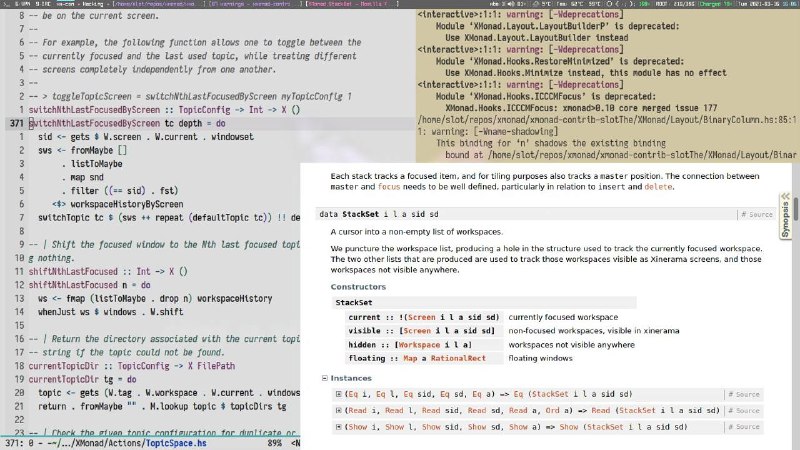
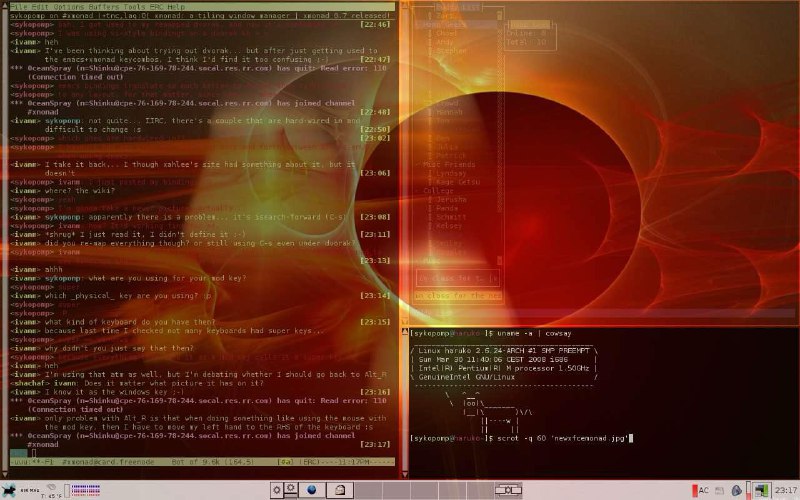
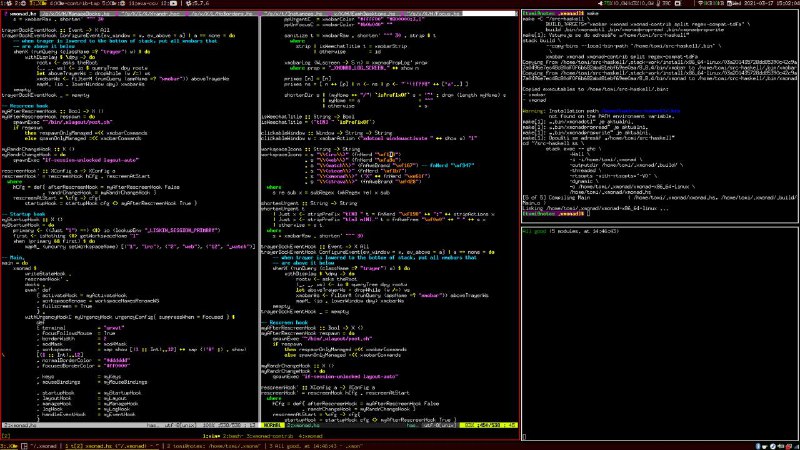
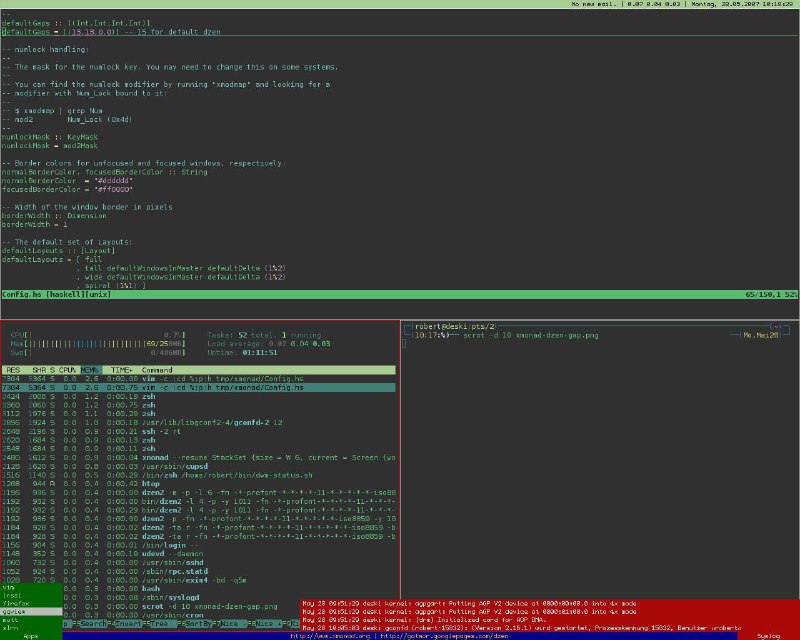
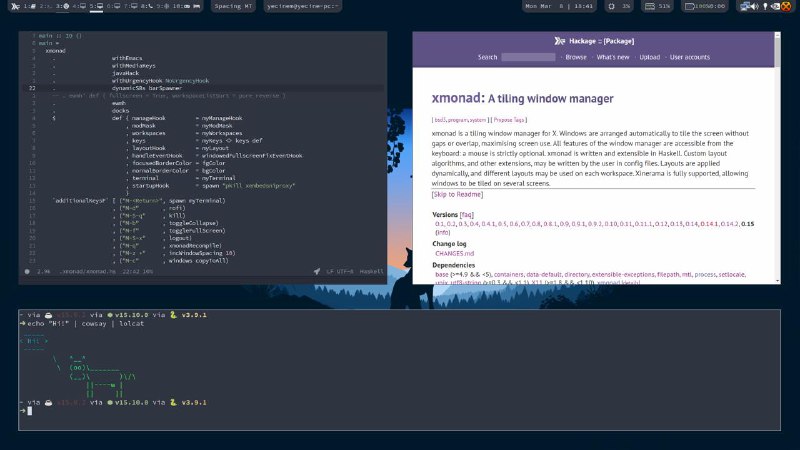
Share with your friend now:
tg-me.com/haskell_tg/10
